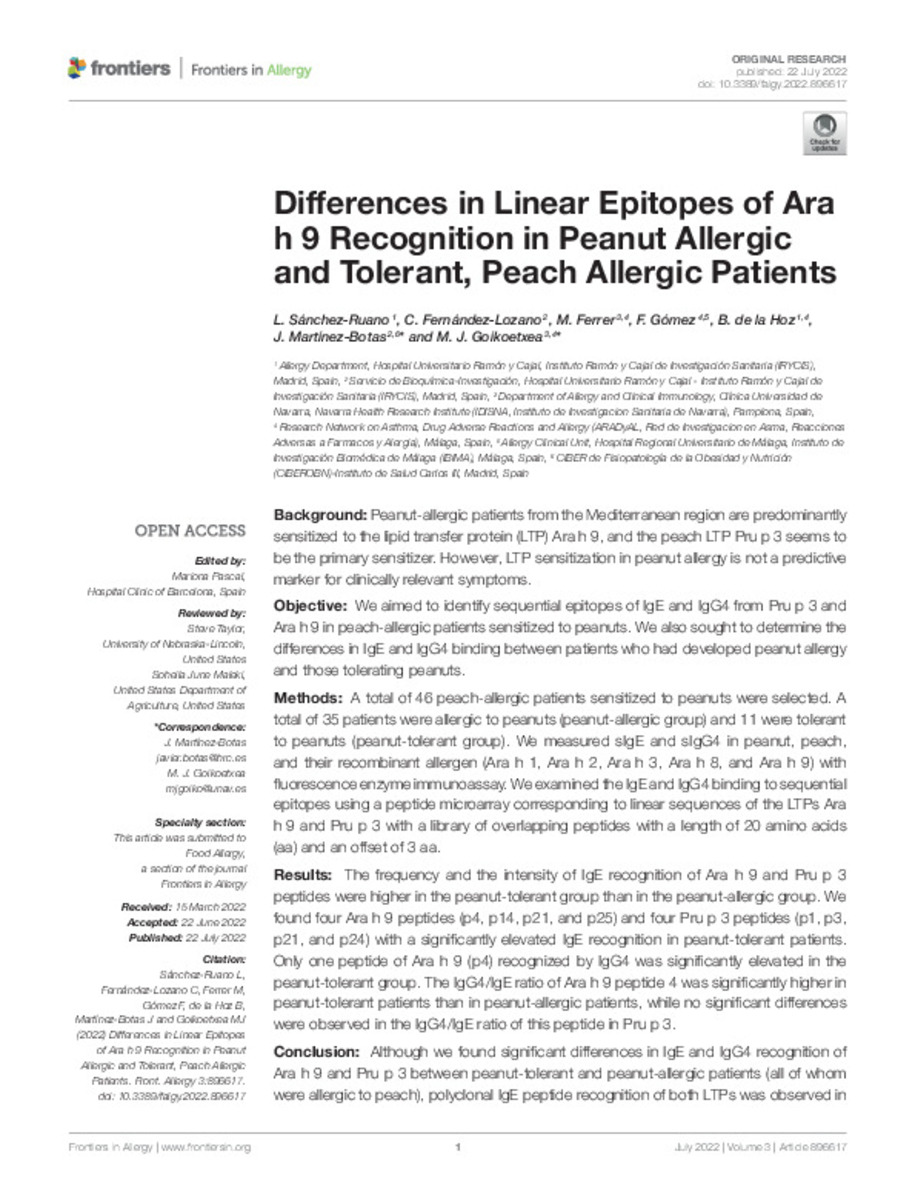Differences In Linear Epitopes Of Ara h 9 Recognition In Peanut Allergic And Tolerant, Peach Allergic Patients
Keywords:
Área de Medicina Clínica y Epidemiología
Peanut
Lipid transfer protein
Linear epitopes
Peach
IgE
IgG4
Cross reactivity
Note:
This is an open-access article distributed under the
terms of the Creative Commons Attribution License (CC BY). The use, distribution
or reproduction in other forums is permitted, provided the original author(s) and
the copyright owner(s) are credited and that the original publication in this journal
is cited, in accordance with accepted academic practice. No use, distribution or
reproduction is permitted which does not comply with these terms.
Citation:
Sánchez-Ruano, L.; Fernández-Lozano, C.; Ferrer-Puga, M. (Marta); et al. "Differences in linear epitopes of Ara h 9 recognition in peanut allergic and tolerant, peach allergic patients". Frontiers In Allergy. 3, 2022, 896617
Statistics and impact
0 citas en

0 citas en

Items in Dadun are protected by copyright, with all rights reserved, unless otherwise indicated.







